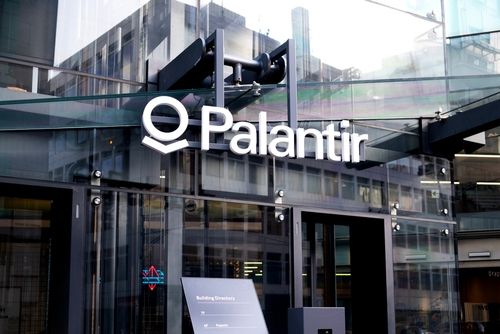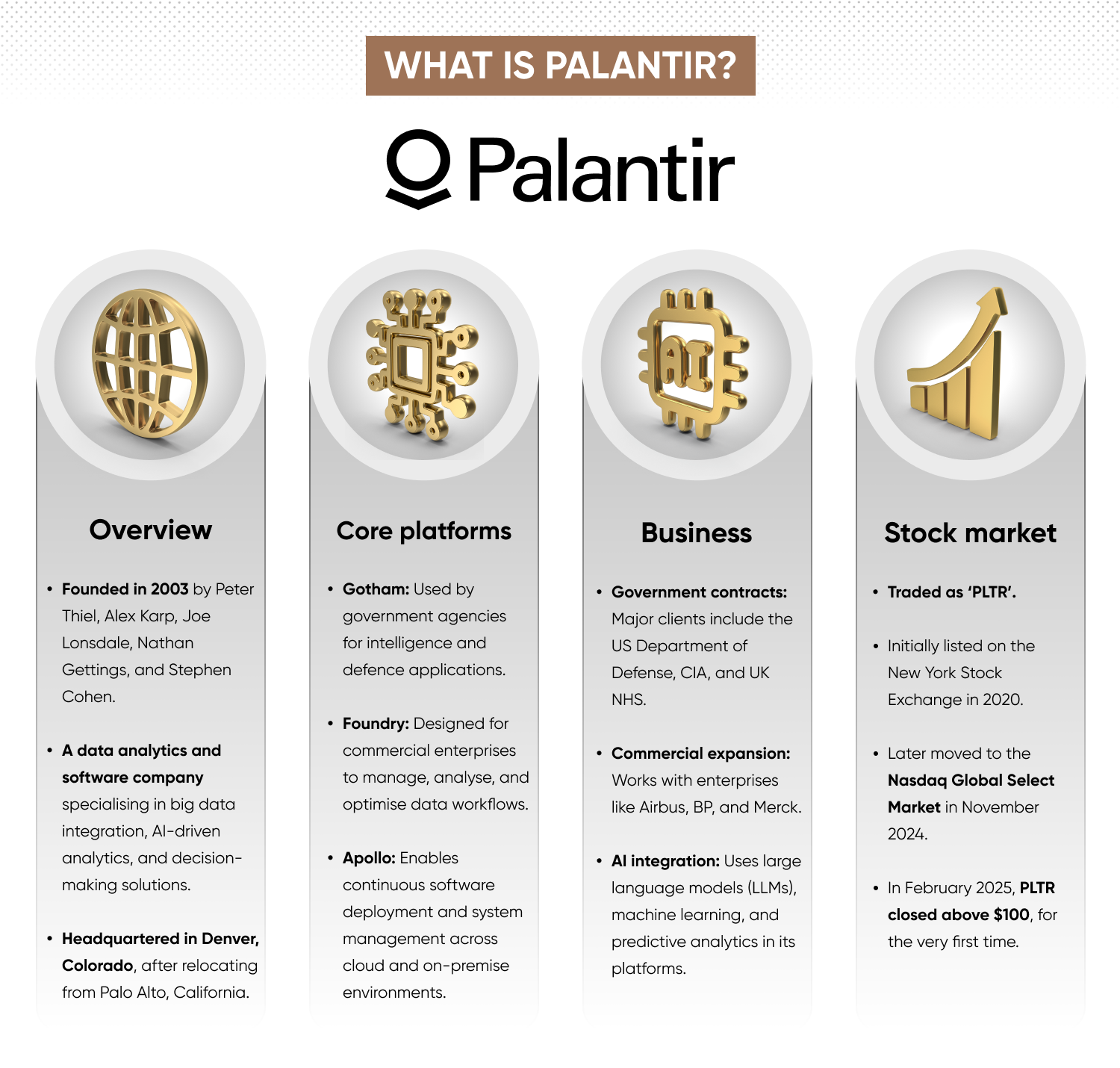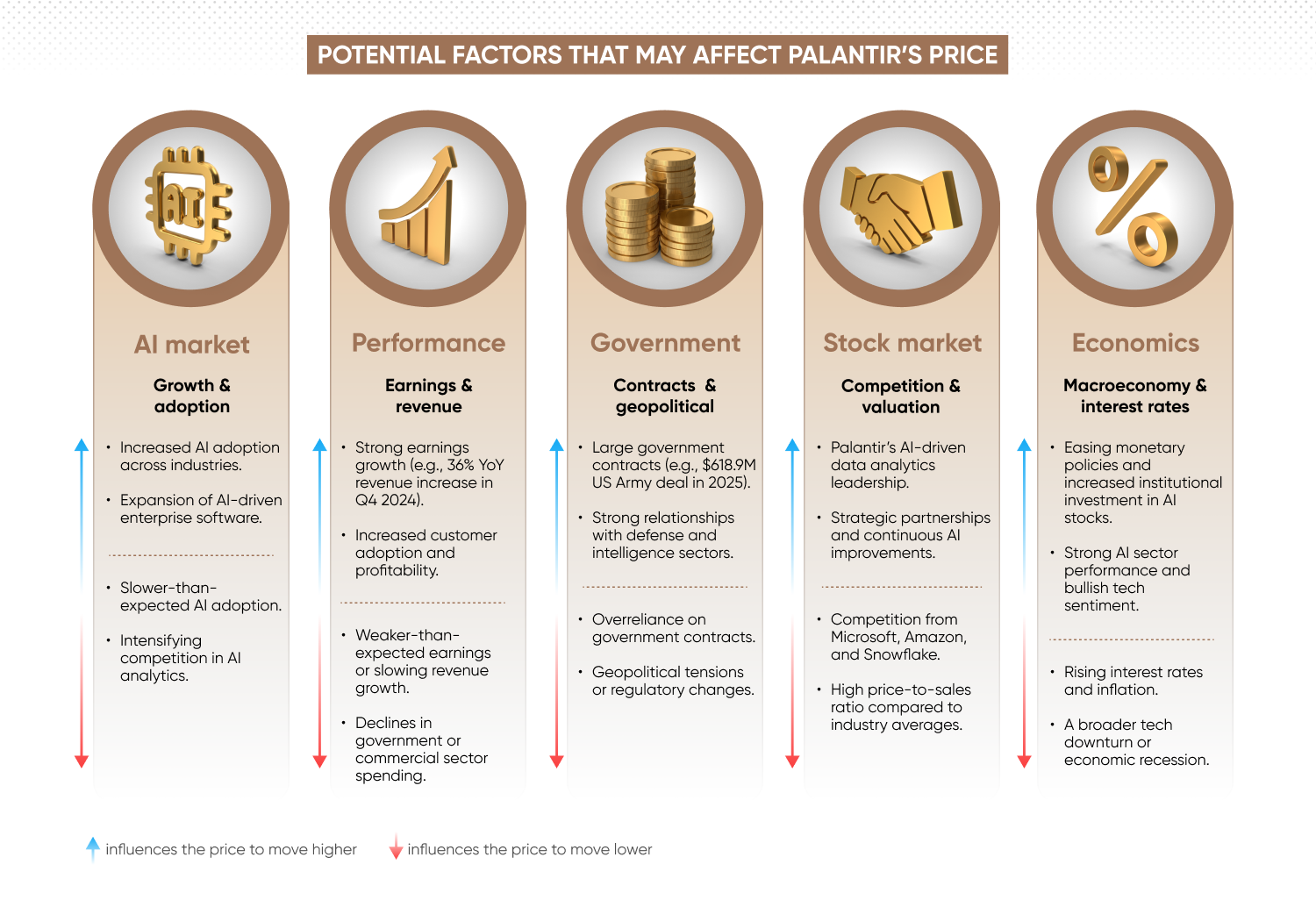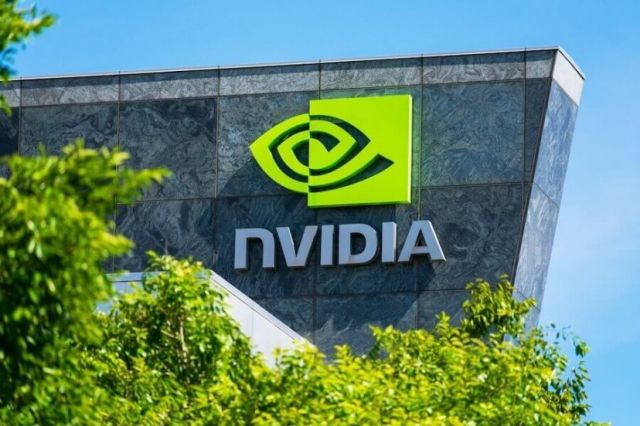What is Palantir, and how do you trade it?

Learn about Palantir (PLTR), with trading hours and how to trade Palantir CFDs.
What is Palantir?

Founded in 2003 by Peter Thiel, Alex Karp, Joe Lonsdale, Nathan Gettings, and Stephen Cohen, Palantir Technologies is a data analytics and software company specialising in big data integration, analytics, and decision-making solutions, with a growing emphasis on artificial intelligence (AI).
Headquartered in Denver, Colorado, following its 2020 relocation from Palo Alto, California, Palantir develops platforms to help clients integrate, analyse, and visualise complex datasets. Its revenue growth is driven primarily by government contracts, with increasing expansion into commercial sectors such as defence, finance, healthcare, and supply chain management.
Palantir operates across three core platforms:
-
Palantir Gotham: primarily used by government agencies for intelligence and defence applications.
-
Palantir Foundry: designed for commercial enterprises to manage and optimise data workflows.
-
Palantir Apollo: an operational platform that enables continuous software deployment and system management across diverse environments.
Palantir designs data-driven solutions for a broad range of use cases, including fraud detection, disease prediction, and risk assessment, with a growing focus on large language models (LLMs) and generative AI for enterprise applications. Clients include major government institutions such as the US Department of Defense, CIA, and organisations within the UK healthcare sector, including projects involving the NHS, as well as corporations like Airbus, BP, and Merck.
What is Palantir’s share price history?
Palantir's share price history began on the New York Stock Exchange (NYSE) on 30 September 2020, listed under the ticker symbol 'PLTR'. The company went public through a direct listing, with a reference price of $7.25 per share. On its first day of trading, Palantir's stock opened at $10 and closed at $9.50.
During its early months on the stock market, Palantir's stock price experienced significant volatility. Palantir’s price significantly increased in late 2020, driven by market enthusiasm for tech stocks and Palantir's government contracts. On 27 January 2021, Palantir closed at $39, representing a 438% increase from its reference price.
However, concerns about the company's valuation, insider selling, and a broader tech sector selloff contributed to a decline in Palantir’s share price in 2021. At the end of the year, the stock closed at approximately $18. The downward trend continued through 2022, with Palantir dipping below its initial reference price on several occasions, as rising interest rates and economic uncertainties weighed heavily on growth stocks. Palantir's share price closed the year at $6.42 on 30 December 2022.
Past performance is not a reliable indicator of future results
2023 marked a year of recovery for Palantir. The company's focus on artificial intelligence and its expanding commercial client base lifted trading sentiment. By the end of 2023, the stock had more than doubled, closing at $17.17 on 29 December 2023.
The momentum continued into early 2024, with Palantir's stock price surging past $20 on 6 February 2024. This rally was fuelled by strong Q4 2024 earnings and growing optimism about the company's AI capabilities. Palantir Technologies transferred its Class A Common Stock listing from the New York Stock Exchange (NYSE) to the Nasdaq Global Select Market on 26 November 2024 and maintained its ticker symbol 'PLTR' – closing at $75.63 on 31 December 2024.
By early 2025, Palantir's stock had reached new heights, surpassing $100 per share for the first time on 4 February 2025. On February 6, 2025, Palantir hit an all-time high of $111.54 – representing more than a 1,387% increase over its reference price – influenced by Palantir's continued expansion in both government and commercial sectors, as well as its growing reputation as a leader in AI-powered data analytics.
Which factors might affect the Palantir live stock price?

Several factors could influence the Palantir live stock price, including AI market developments, earnings performance, government contracts, commercial sector growth, and broader macroeconomic conditions.
AI market growth and adoption
Palantir operates at the intersection of AI and big data analytics. As artificial intelligence adoption accelerates across industries, demand for Palantir’s platforms – Gotham, Foundry, and Apollo – continues to grow. The expansion of AI-driven enterprise software could contribute to revenue growth, supporting Palantir’s stock price. However, if AI adoption slows or competition intensifies, Palantir's stock price could face pressure.
Earnings and financial performance
As a publicly traded company, Palantir reports quarterly earnings, which can significantly impact its stock price. Strong results – such as revenue growth, higher profit margins, or increased customer adoption – may drive positive market sentiment. For example, Palantir’s stock surged following its Q4 2024 earnings, which reported a 36% year-over-year revenue increase to $828 million. Conversely, weaker-than-expected earnings, reduced government spending, or declining commercial revenue could weigh on Palantir’s share price.
Government contracts and geopolitical factors
Palantir’s contracts with government agencies provide a stable revenue stream, but renewals and regulatory policies introduce potential risks. Major government deals, such as a $618.9m contract extension with the US Army in January 2025, can support long-term growth and strengthen trader confidence. However, Palantir’s reliance on government contracts exposes it to potential geopolitical tensions and budgetary shifts. Any reductions in defence spending or restrictions on government AI procurement might impact earnings and, in turn, Palantir's stock price.
Competition and valuation concerns
Palantir has positioned itself as a leader in AI-driven data analytics, facing competition from established tech firms such as Microsoft, Amazon, and Snowflake. Increased competition could lead to pricing pressures or reduced market share, affecting growth prospects. Palantir’s valuation remains a topic of debate. Analysts have pointed out that its price-to-sales ratio significantly exceeds industry averages. If sentiment shifts due to concerns over sustainability, Palantir’s stock price may experience volatility.
Macroeconomic conditions and interest rates
Like other growth stocks, Palantir is sensitive to broader economic conditions. High inflation, rising interest rates, or a downturn in the tech sector could potentially influence lower demand for high-valuation stocks. In contrast, easing monetary policies or increased institutional investment in AI-focused equities could provide upward momentum.
Is Palantir an AI stock?
Although Palantir's primary focus is on enterprise solutions, it has integrated chatbots into its platforms, such as the incorporation of Grok from Elon Musk's xAI, and AI features in Palantir’s core products.
-
Gotham, primarily used by government agencies, uses AI to analyse large-scale intelligence data, detect patterns, and enhance decision-making.
-
Foundry, designed for commercial clients, enables enterprises to integrate AI into their data workflows for automation, forecasting, and optimisation.
-
Apollo, designed for commercial clients, enables enterprises to integrate AI into their data workflows for automation, forecasting, and optimisation.
Palantir integrates AI across its software platforms, with applications in machine learning, predictive analytics, and natural language processing (NLP). Given Palantir's significant focus on AI-driven solutions across its platforms, it is increasingly viewed as a prominent player in the AI sector.
Learn more about AI stocks in our comprehensive AI shares trading guide.
What are Palantir’s stock trading hours?
Palantir’s stock market trading hours are the same as the NASDAQ Global Select Market – which is open Monday to Friday – where it's listed under the symbol, PLTR’:
NASDAQ Global Select Market
-
In winter, from 2:30pm to 9:00pm UTC.
-
In summer, from 1:30pm to 8:00pm UTC.
You can follow Palantir’s stock performance with our Palantir share price chart.
Monitoring Palantir’s activity can help you to keep an eye out for the effects of any fundamental or technical events that may affect short-term movements in the Palantir share price.
How to trade Palantir shares with CFDs
If you want to take a position on Palantir shares, you have two options. First, you can buy physical shares in the company through the Nasdaq Global Select Market, where it’s listed. In this case, investing in Palantir stocks means you will own a share, or shares, in the company. This can be considered a long-term investment, as you’re hoping for the price to rise over time.
Alternatively, you can trade a derivative product such as a contract for difference (CFD) on the underlying Palantir stock market price, and speculate on its price movements without actually owning the asset. A CFD is a financial contract, typically between a broker and a trader, where one party agrees to pay the other the difference in the value of a security, between the opening and closing of the trade.
CFD trading is unlike traditional investing. With CFDs, you can either hold a long position (speculating that the price will rise) or a short position (speculating that the price will fall). While CFDs are often used for short-term trades, they can also be held for longer periods depending on your trading strategy.
Another key difference between buying physical Palantir shares and trading through a derivative is the leverage that can be employed with the latter. CFDs are traded on margin, which means that a trader can get exposure to larger positions with a relatively small outlay. In this scenario, both your profits and losses are amplified, making such trading risky. You can learn how to trade shares in our comprehensive guide to shares trading.
To trade Palantir stock CFDs with us, just sign up for a Capital.com account, and once you’re verified, you can use our advanced web platform or download our intuitive yet easy-to-use app. It’ll take just a few minutes to get started and access the world’s most-traded markets.
FAQs
What does Palantir do?
Palantir Technologies is a data analytics and software company, publicly traded on the NASDAQ Global Select Market, that develops AI-driven platforms for government and commercial clients. Palantir’s core products include Gotham, used by intelligence and defence agencies; Foundry, designed for enterprise data management; and Apollo, a continuous delivery system that manages and deploys Palantir's software platforms. Palantir’s technology is adopted across sectors including national security, finance, healthcare, and supply chain management.
Is Palantir a buy?
Whether Palantir is a buy depends on your preferences, trading strategy and risk tolerance. The company has seen strong growth in its AI and commercial segments, with ongoing expansion into new markets. However, its high valuation, competition from major tech firms, and reliance on government contracts present potential risks. Conduct thorough research and use appropriate risk management strategies before trading.
What’s next for the Palantir share price?
Palantir’s share price could be influenced by earnings performance, AI adoption trends, and macroeconomic factors, such as interest rates and market sentiment. Government contracts can generate sustained revenues, while regulatory developments and competition in the AI space could impact growth. Monitoring key financial reports, AI sector trends, and technical indicators can help traders assess potential price movements.
Visit our other complete guides

How to trade Nvidia
